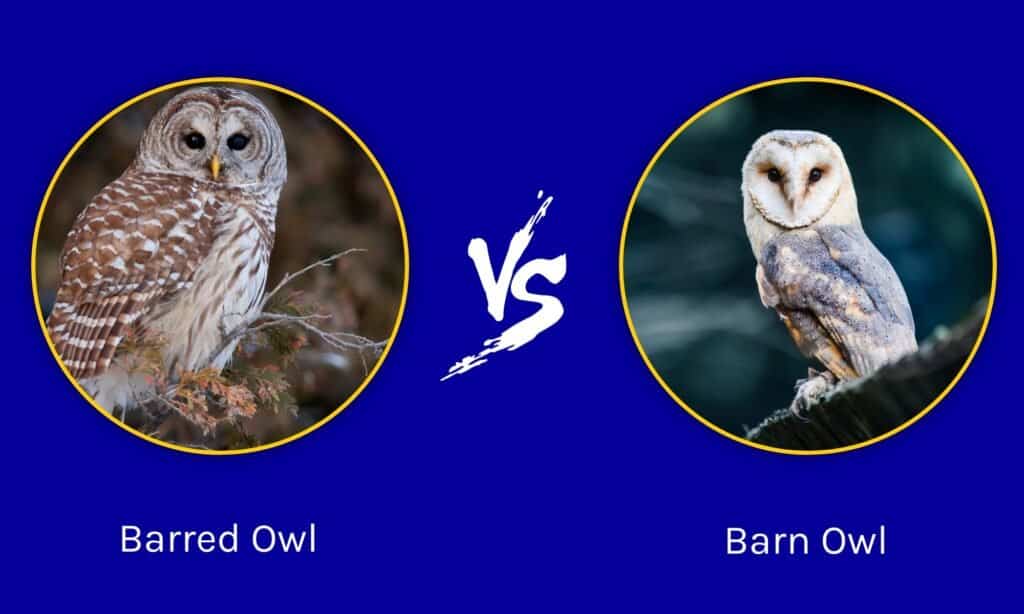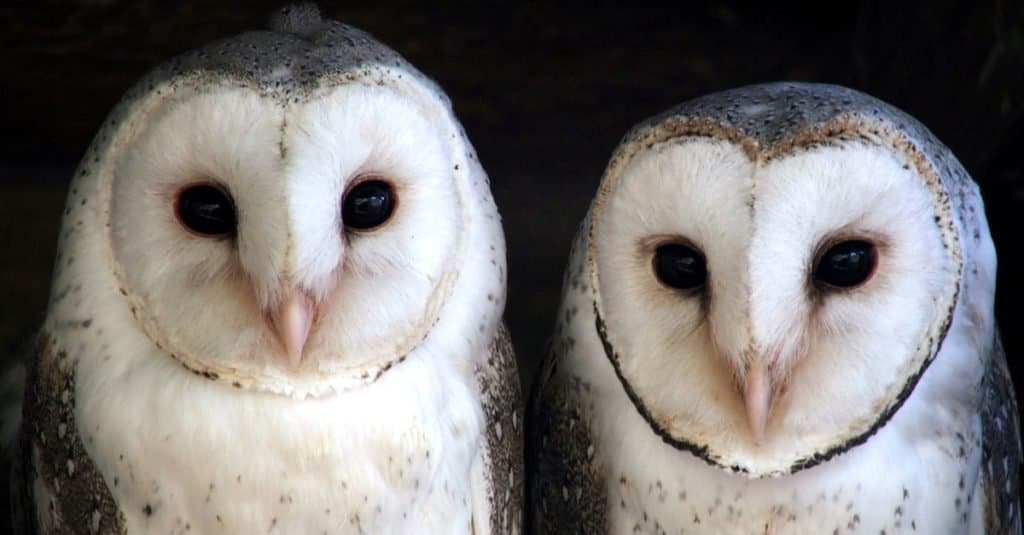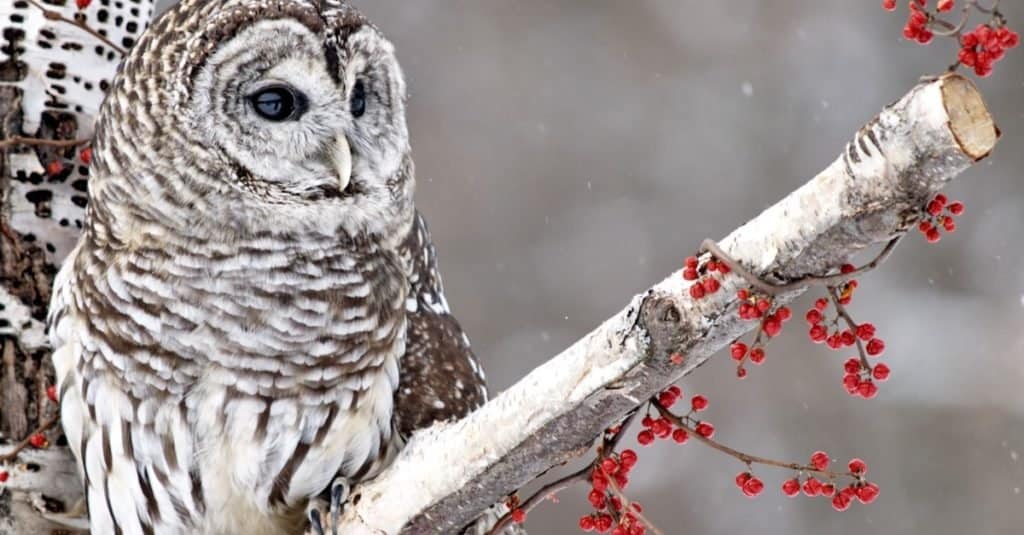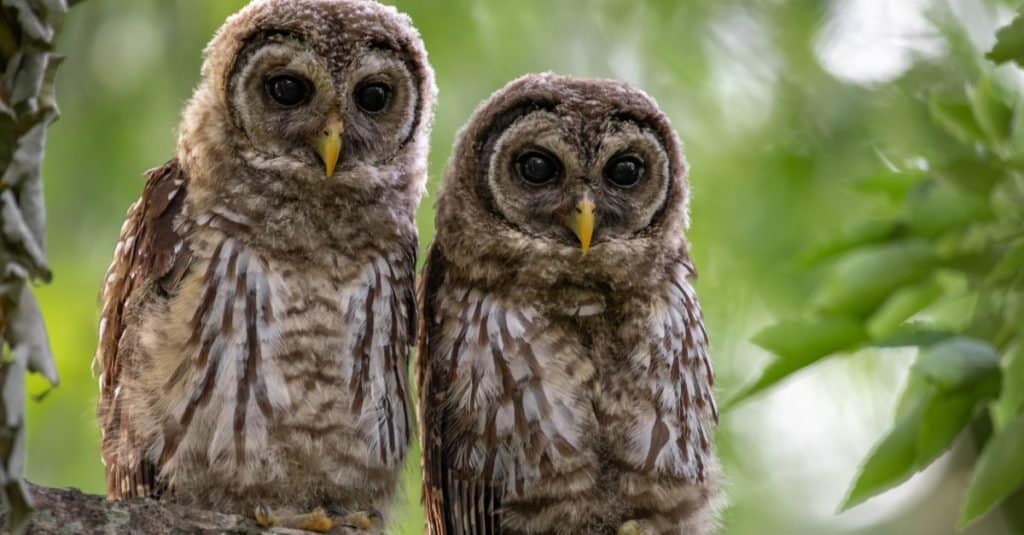Owls are in a class by themselves, literally. There are over two hundred owl species. With that many different owls, it is understandable that you might not recognize every species on sight. However, you will find that each species is unique! When comparing barred vs barn owls, there have both similarities and differences. They have excellent night vision, head rotation of up to 270 degrees, exquisite hearing, and powerful four-toed talons. In the Eastern United States, barred and barn owls are the only native species that have black eyes. So how do you tell them apart? Let’s unravel!
Key Differences between a Barred Owl and a Barn Owl

The key differences between barred and barn owls are appearance, size, and behavior. The main way to tell them apart is to look for the distinct white, heart-shaped face of the barn owl. But this is far from the only way to tell which is which. Barn owls and barred owls have distinct physical characteristics that make each owl unique.
Let’s explore the differences in detail below.
Barred vs Barn Owls: Appearance

Barn owls have a distinctive facial appearance, heart-shaped white faces.
©Joanne Harris and Daniel Bubnich/Shutterstock.com
Barred owls are known for their distinct brown, grey, and white plumage with horizontal and vertical bars. Their breast is horizontally striped, while the belly is in a vertical pattern. A complex series of darker white and brownish-grey bars also cover the head, back, and wings. Their feathers are extremely soft, and each primary wing has a comb-shaped edge that makes them silent in flight.
With their most distinctive feature being their heart-shaped, white face, barn owls are the most easily identified owl species and they are seriously adorable. They have light brown feathers starting at the crown of the head, down the back, tail, and back of the wing. A pattern of light tan spots scatters over the owl’s body which is on the white neck, chest, and underbelly. A female with more spotting is seen as a more desirable mate.
Barred vs Barn Owls: Size

Barred owls are larger than barn owls.
©cindylindowphotography/Shutterstock.com
Barn owls are smaller than barred owls, between 10-20 ounces and 9-18 inches long, with a wingspan up to forty-three inches long. In this case, females are overall larger than males on average. Barred owls are between 18-20 inches long, weigh 1-2 pounds, and have a wingspan up to forty-three inches long. Male owls are bigger than females, but female owls tend to weigh more.
Barred vs Barn Owls: Habitat
Barn and barred owls are found in the same territory throughout North America. The barn owl is however not found in the Arctic and Antarctic regions. Neither species shies away from human areas, but both prefer hollowed-out spaces for rest or raising young. However, one of these owls is not above living in a human building, and that is how it got its common name.
Barred vs Barn Owls: Behavior

Barred owls are always silent throughout their flight.
©iStock.com/Harry Collins
Barred owls are capable of a variety of vocalizations, and their distinct “hooting” is the standard for what we think of as a classic owl sound! These vocal skills range from calm to downright creepy and can even sound like human screaming, hissing, cackles, or evil laughter. Despite being noisy, barred owls are virtually silent in flight. For more about how barred owls hunt, check out this article on what they eat.
Barred owls have an innate curiosity about humans and will often choose trees quite close to human dwellings if the tree is large enough. They choose trees with large cavities over sixteen feet high and will take over another animal’s den if they cannot find a suitable space. The barred owl stays in the same territory for their entire lifetime and has the same mate but does not live with them outside of raising young. So, if you place a nice nest box in a sturdy tree, a young barred owl might decide to be your neighbor!
Barn owls also stay in the same territory for their lifetimes and prefer large hollows in trees. However, they have a clear preference for abandoned or rarely used human structures, particularly barns. Another reason they like to live in barns and sheds is the proximity to their preferred hunting grounds. Barn owls prefer to hunt in open fields, and if no trees are close by, they do not mind sharing space with livestock! The barn owl mates for life unless they cannot produce enough young owlets and stay in the same territory together. For more about how barn owls live and hunt, check out how they eat!
Barn owls coexist close to humans and frequent graveyards. Instead of hooting, barn owls have a distinct screech compared to a banshee or wailing ghost. These haunting calls have earned them an unfair reputation for being bad luck. If you would like to be neighbors to a couple of barn owls, they will also enjoy a nest box if no trees or barns are available!
Owls Are One Of The Most Deadly Nocturnal Predators!
Owls hunt by night. Their large eyes and facial disk shapes grant them unrivaled vision and hearing. Owls have asymmetrical ear holes that let them pick up sounds that are miles away, and their vision works like binoculars that allow them to zoom in on long-distance prey. Though unable to move their front-facing eyes, owls can rotate their heads up to 270 degrees for unmatched peripheral vision!
Sharp, four-toed talons with two rotating claws can grip and snatch prey mid-flight, and most owls are silent in flight. The barred owl and the barn owl face a common predator in the Great Horned Owl and the Eagle Owl. Possums, raccoons, and eagles prey on eggs and owlets.
But barred owls and barn owls seem to have found a way around some of the dangers they face by adapting to live close to every animal’s biggest predator, which is, unfortunately, us. To learn more about how to help owls, check out these articles on owl predators or how long owls live!
The photo featured at the top of this post is © iStock.com/Paolino Massimiliano Manuel
Thank you for reading! Have some feedback for us? Contact the AZ Animals editorial team.






